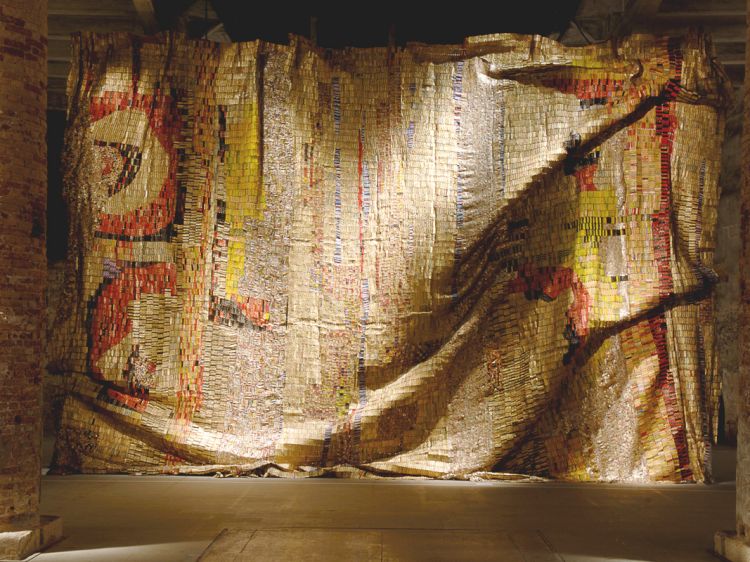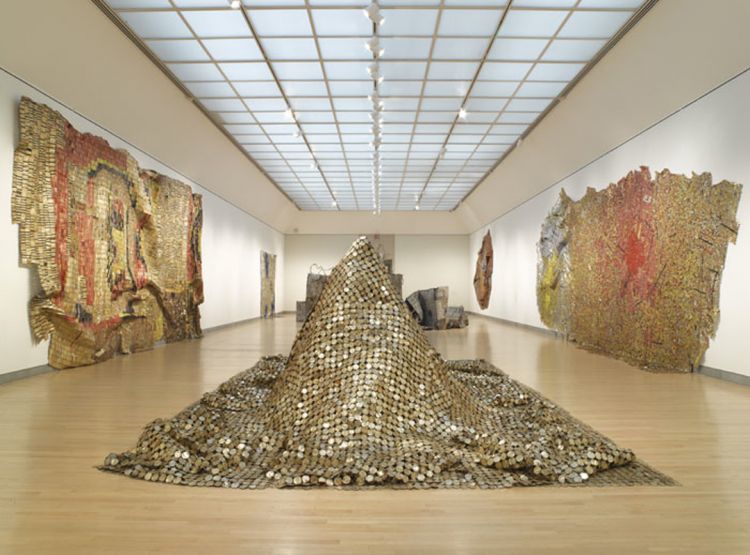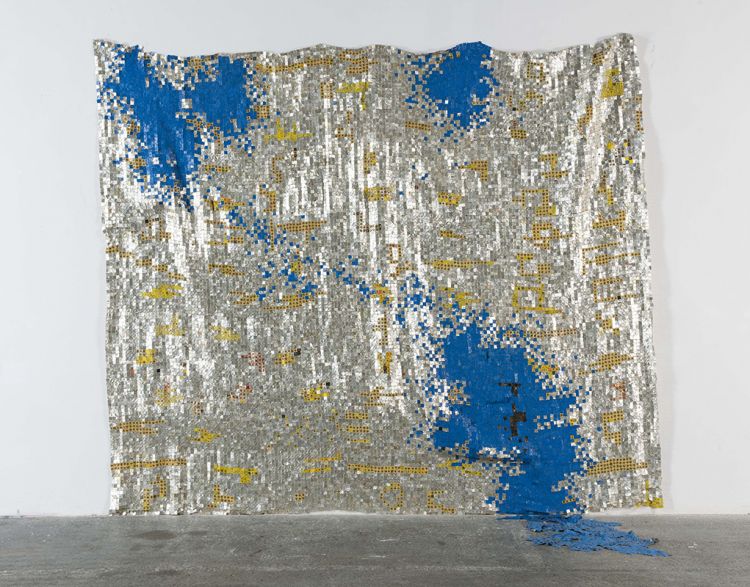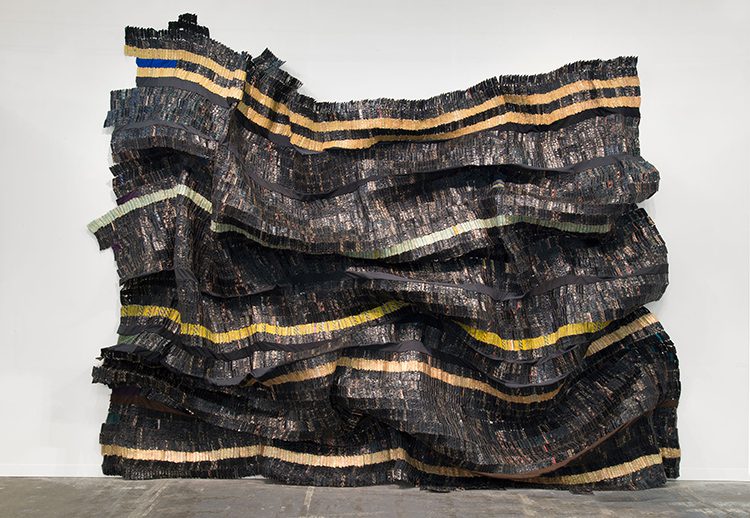ART-PRESENTATION:El Anatsui-Five Decades
 El Anatsui (Golden Lion for Lifetime Achievement in Venice Biennale 2015) emerged from the post-independence art movements of ‘60s and ’70s West Africa. He transforms simple materials into complex assemblages that create distinctive visual impact. El Anatsui’s iconic “bottle-top installations” have provoked a frenzy of international attention between 2002 and the present, with institutions queuing to acquire these mesmerising works.
El Anatsui (Golden Lion for Lifetime Achievement in Venice Biennale 2015) emerged from the post-independence art movements of ‘60s and ’70s West Africa. He transforms simple materials into complex assemblages that create distinctive visual impact. El Anatsui’s iconic “bottle-top installations” have provoked a frenzy of international attention between 2002 and the present, with institutions queuing to acquire these mesmerising works.
By Efi Michalarou
Photo: Jack Shainman Gallery Archive
The exhibition “El Anatsui: Five Decades” at Carriageworks in Australia presents over 30 works from the 1970s to now, including ceramics. Drawings, sculptrures and woodcarvings alongside the intricate and expansive, large-scale installations for which Anatsui is best known. In an interview with October Gallery, El Anatsui noted, “The amazing thing about working with these metallic ‘fabrics’ is that the poverty of the materials used in no way precludes the telling of rich and wonderful stories”. Many of Anatsui’s early ceramics, prints and sculptures incorporate West African adinkra symbols (Visual symbols, originally created by the Akan Tribe, that represent concepts or aphorisms, they are used extensively in fabrics, pottery, logos and advertising) within their surfaces. Anatsui’s adaptions of the rich visual culture of Africa reaffirm that art is never stagnant nor determined, rather it is part of the changing rhythm of contemporary life. While many of his later works are monumental in scale, they are also handmade, shaped by human touch and individuality. From the walls to the floor the objects unfurl, expansive rather than confined they suggest the contours of landscape, cartography, and the language of abstract painting. He has said that is inspired by the “Huge piles of detritus from consumption” due to West Africa’s limited recycling technology. Cultural, economic, and social issues of colonialism, globalism, waste, and consumerism are explored under the cloak of beauty. In Nigeria, local distilleries produce dozens of different brands of spirits in bottles of various sizes that are recycled after use. The discarded aluminum tops, seals, and labels, however, are gathered by the artist. After being bent, twisted, and pieced together, they are transformed into massive, richly colored, and luxuriously textured tapestries. Given liquor’s key history in the slave trade, these works reference earlier relationships between Europe, Africa, and the United States.
Info: Beatrice Gralton, Carriageworks, 245 Wilson St, Eveleigh, Australia, Duration: 7/1-6/3/16, Days & Hours: Mon-Sat 10:00-18:00, http://carriageworks.com.au








